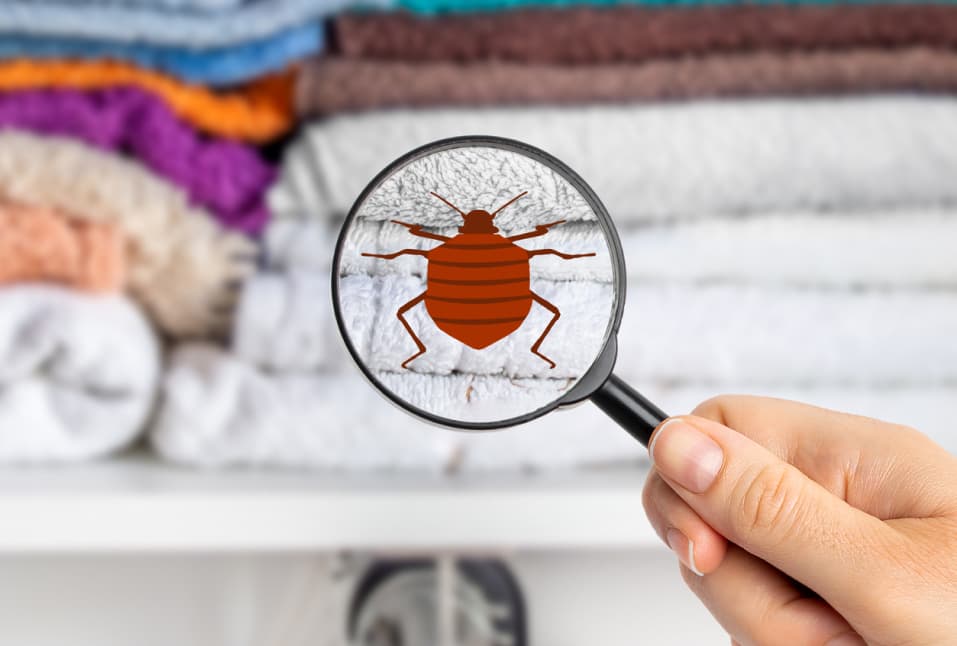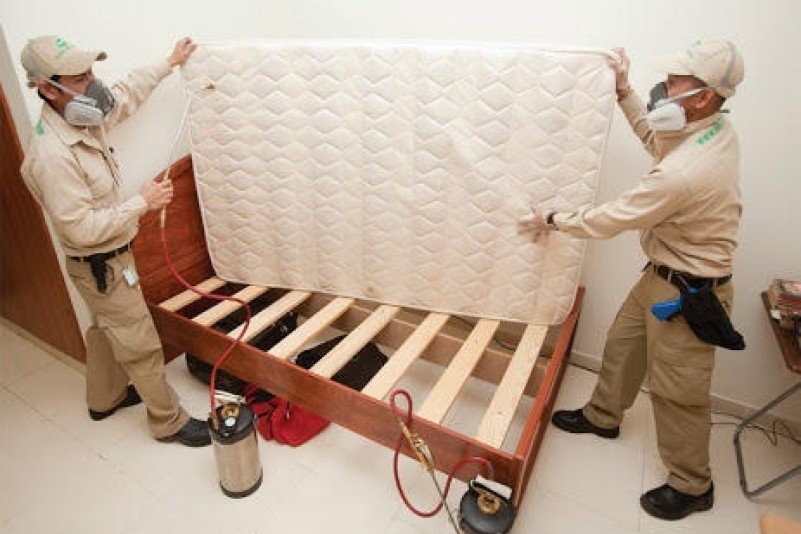Reliable Bed Bug Exterminator Near Me: DC Heat Treatment Experts
Reliable Bed Bug Exterminator Near Me: DC Heat Treatment Experts
Blog Article
Exploring the Scientific Research Behind Bed Insect Warmth Treatments as a Lasting Pest Monitoring Approach
In the world of insect monitoring, the mission for lasting and efficient remedies stays a consistent quest. One such approach that has gotten traction in the last few years is using warm therapies to fight bed pest infestations. By using the scientific research behind thermal death factors for these persistent bugs, warmth treatments use a promising choice to conventional chemical-based strategies. The intricacies of just how warm properly eliminates bed bugs and the more comprehensive implications for lasting pest monitoring practices make this a subject worth exploring further.
Bed Bug Heat Treatment Process

Thermal Death Point for Bed Bugs
Revealing bed pests to elevated temperature levels beyond their thermal tolerance variety is critical for attaining efficient eradication in heat therapy procedures. The thermal fatality point for bed bugs describes the temperature at which these parasites can not survive. Research indicates that bed bugs begin to perish when subjected to temperature levels over 113 ° F(45 ° C) for a sustained period. As the temperature level enhances, so does the death price of bed pests. At around 118 ° F(48 ° C ), bed pests start to pass away rapidly, with a mortality rate of nearly 99% within mins of direct exposure. This demonstrates the sensitivity of bed bugs to high temperature levels and highlights the effectiveness of heat therapies in eradicating invasions. By getting to and preserving temperatures above the thermal fatality point for bed insects, parasite monitoring professionals can ensure thorough elimination of bed pest populaces, including hard-to-reach locations where chemical therapies may be less effective. Understanding the thermal death point for bed pests is crucial for executing successful warm treatment techniques and accomplishing lasting pest monitoring results.
Advantages of Heat Treatments
Having developed the crucial thermal fatality point for bed pests, it is critical to now explore the substantial advantages that warmth therapies use in effectively eradicating these resilient pests. One of the primary advantages is that heat can permeate deep into crevices and cracks where bed pests hide, making sure that even the most hard-to-reach locations are heated up to dangerous temperatures.
Moreover, warm treatments are environmentally pleasant and safe, making them a sustainable insect management approach. Unlike chemical pesticides, heat therapies do not leave harmful residues that can position threats to human health and wellness or the setting. This facet is specifically crucial in sensitive environments such as hospitals, institutions, and suburbs where chemical use might not be preferable.
Additionally, warmth treatments have a high success price in removing bed bug invasions in a solitary therapy, lowering the need for numerous visits and decreasing interruption to owners. This efficiency his explanation not just conserves time and cash but additionally provides comfort to those dealing with bed pest issues.
Efficiency of Warm Treatment

Research research studies have regularly demonstrated the effectiveness of heat therapies in accomplishing a high rate of bed bug death. Appropriately conducted warmth treatments can get to all the gaps and cracks where bed bugs may be harboring, ensuring a thorough strategy to extermination. Moreover, warm treatments have the added benefit of killing bed insect eggs, which are commonly resistant to conventional chemical treatments. Generally, the efficiency of warmth therapies in eliminating bed bug invasions makes them a sustainable and dependable parasite management approach.
Sustainable Pest Monitoring Perks
Carrying out lasting bug monitoring methods uses lasting benefits for both the atmosphere and public wellness. By using methods such as warm treatments for bug control, we can minimize the dependence on hazardous chemical pesticides that can have negative impacts on ecological communities and human health - exterminator. Lasting insect management strategies assist in protecting biodiversity by targeting certain bugs without hurting non-target organisms, thereby keeping a well balanced community
Additionally, lasting parasite management practices add to the general wellness and wellness of the public. By decreasing direct exposure to hazardous chemicals made use of in conventional parasite control techniques, warmth treatments provide a much safer option for insect monitoring in residential, business, and public rooms. This reduction in chemical use likewise assists in stopping chemical deposits from contaminating dirt, air, and water, protecting environmental high quality.
Final Thought
Finally, bed bug warm therapies have been revealed to be a lasting and efficient bug administration technique. The thermal death factor for bed bugs makes them susceptible to heat therapies, which have numerous advantages over conventional chemical therapies. The performance of heat therapies in removing bed bug problems while decreasing environmental influence highlights the possibility of this approach as a sustainable solution check my site for bug control.
The bed pest warm therapy procedure involves increasing the temperature level within ravaged areas to a degree that effectively eliminates bed bugs and their eggs. By getting to and keeping temperatures over the thermal fatality point for bed bugs, parasite administration specialists can guarantee comprehensive removal of bed pest populaces, including hard-to-reach areas where chemical therapies might be less efficient. One of the key benefits is that heat can penetrate deep into gaps and fractures where bed pests hide, making sure that even the most hard-to-reach locations are warmed to dangerous temperatures. Unlike chemical therapies that may leave behind immune populaces, warm treatments supply a ecologically friendly and safe option that can pass through deep into furnishings, wall surfaces, and other hard-to-reach areas where bed insects hide.
The thermal death point for bed insects makes them susceptible to warmth treatments, which have many benefits over typical chemical therapies.
Report this page